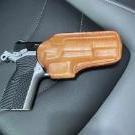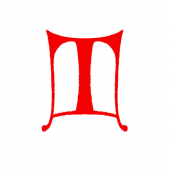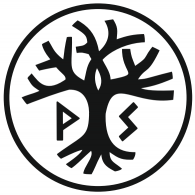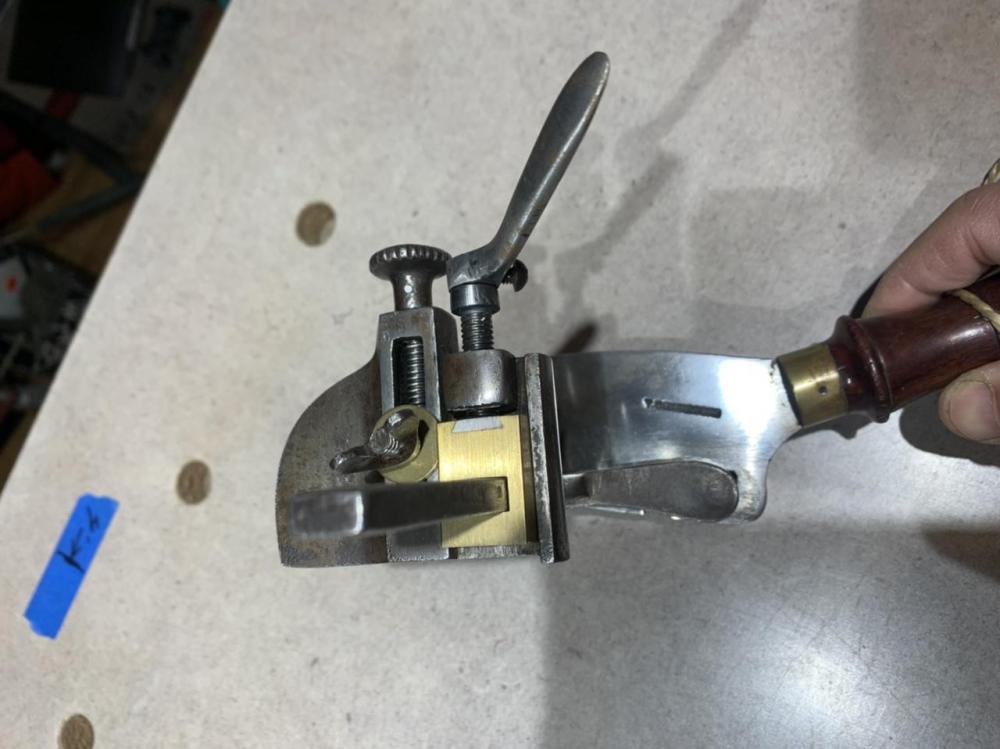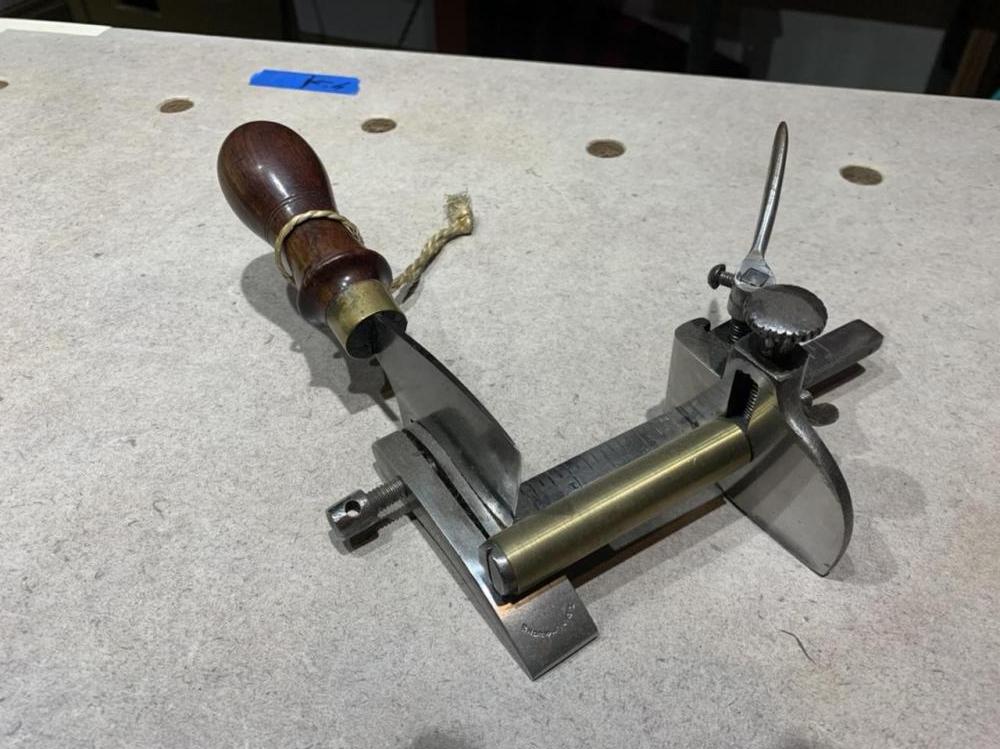-
Posts
127 -
Joined
-
Last visited
About Joon1911
- Birthday 04/01/1977
Profile Information
-
Gender
Male
-
Location
Peoples Republik of New York
-
Interests
Gunleather, handsewing, stitcher maintenance.
LW Info
-
Leatherwork Specialty
gunleather
-
Interested in learning about
handstitching, bookbinding, basically anything new
-
How did you find leatherworker.net?
A friend in the business
Recent Profile Visitors
10,359 profile views
Joon1911's Achievements

Member (2/4)
-
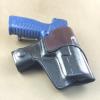
Tutorial for Summer Special Type Holster?
Joon1911 replied to RVM45's topic in Gun Holsters, Rifle Slings and Knife Sheathes
This is a similar design. No sewn in welts for sight channel but the channel can be easily molded instead. https://youtu.be/D8iGei9rmaI I wouldn’t go thinner than 7/8 personally. -

Help with holster Maker’s Mark
Joon1911 replied to Coinroller's topic in Gun Holsters, Rifle Slings and Knife Sheathes
Matt Del Fatti. Nice inheritance, his list has been closed for years. http://delfatti.com -
Tandy Leather is carrying private label versions of Cobras. https://tandyleather.com/products/cobra-class-4-dream-machine It looks like there’s one in Philly. Store #181 at 11000 Roosevelt Blvd., 19116 I bought direct from Cobra Steve during the big Cody show. He used to offer a show discount of a few hundred off. Don’t know if he still does that discount, but every bit helps. Freight was expensive 12 years ago, it gotta be triple now considering fuel cost. If you like the machine, I’d suggest calling Steve and ask him if there is anything different in the specs for the private label Tandy version. If he says there’s no difference, I’d buy local if at all possible.
-

Hybrid avenger holster- horsehide
Joon1911 replied to Jc911rsa's topic in Gun Holsters, Rifle Slings and Knife Sheathes
Based on the Arratoonian article, I’d guess you need a 30 ton clicker to make enough pressure to get good definition with horsehide. I think you’d have to invest in aluminum molds to make that work. So base investment would be at least 3-4k and a source of three phase electric… that’s too expensive a proposition for a hobbyist like myself. -

Hybrid avenger holster- horsehide
Joon1911 replied to Jc911rsa's topic in Gun Holsters, Rifle Slings and Knife Sheathes
As for horse hide I’ve tried it a number of times but never found my results satisfactory from a cosmetic standpoint. Andy Arratoonian has a really good article on his website outlining the differences. http://www.holsters.org/which.htm -

Hybrid avenger holster- horsehide
Joon1911 replied to Jc911rsa's topic in Gun Holsters, Rifle Slings and Knife Sheathes
Good on you for tinkering. The best way to improve your skills is to always to be questioning that which came before. Keep in mind your new to you design is not new. If you look back far enough, you’ll see that most everything draws from previous makers. Not that I know for certain that Bill Tucker is the originator, but his HF-1 has been on the market for at least 20+ years as I recall. https://tuckergunleather.com/hf1-belt-holster/ I’d suggest shortening the forward panel some will give some structure to the front belt loop. -

How do you finish off top of a seam when machine stitching?
Joon1911 replied to SewMuchToLearn's topic in Sewing Leather
IMHO I think that application is a perfect situation to leave 10-12” of extra thread and saddle stitch the last 2-3 stitches. Since this termination is a high stress location and machine lock stitches are weak at the termination, I would not want to rely on a backstitch and glue alone at the end of the gusset. I would saddle stitch over the termination of the gusset at least twice giving four threads to fray or break before the gusset is compromised. The easiest reference for saddle stitching is Al Stohlman’s The Art of Hand Sewing Leather. Easily found in reprint paperback on eBay or Amazon. https://a.co/d/42XuXNL There’s also a lot of good YouTube tutorials but they can be hard to follow since they’re really fast at stitching and make it look too easy for the beginner. -
I concur with Wiz’s assessment. I for one am definitely interested if you decide to sell these.
-
What a cool machine!! I’ve never seen a left-handed machine before.
- 5 replies
-
- singer double stitch
- singer29-4
-
(and 1 more)
Tagged with:
-
He is quick to reply via PM on Instagram. He made a left handed version of his plough gauge for me at a very reasonable price. His English is quite decent and provided pricing & delivery leadtimes that were accurate.
-
Congrats on the purchase. Looks like a nice stitch. I buy thread all over the place, mostly Bob at Toledo Sewing Machine but also Springfield Leather, Weaver & Cobra Steve. It all seems to be similar quality. Just buy it wherever you need to order leather or other supplies.
-
-
I have a Dixon that I have mostly restored/rebuilt. Full disclosure, the spring has been replaced, I made a new brass block w/ steel dovetailed wearplate(the original part was missing), new brass roller body and cleaned up most of the corrosion. I also had to replace the threaded elevation rod for the roller guide but the top is original. I couldn’t find a good condition one in the US so I imported it from the UK from the son of a 3 generation leatherworking family, so it has some mileage, but it works very well. I do have all the original parts that came with the gauge. The help twine was on it when I received it. I paid too much for it and have too much time in rebuilding it but don’t use it very much since I had Doldokki make me a left-handed version of his plough gauge. I’d sell it for $575 shipped
-
I’m afraid that’s just the trial and error to figure it all out. When I’m prototyping a new pattern, I buy sheets of 5mm craft foam from Hobby Lobby or Michaels https://www.hobbylobby.com/Crafts-Hobbies/Basic-Crafts/Craft-Foam/Foam-Sheet---12-x-18/p/80763167 5mm is between 12-13 oz so just about perfect re: thickness of material. and it will tear along the stitching if your pattern is too tight. A lot cheaper that using leather. I can usually get 2-3 prototypes out of 1 sheet. Err on the side of slightly too loose for the stitch pattern vs. too tight as the foam has more stretch/give than leather. You will still need to fine tune once you translate to leather. Once you have a good pattern in the foam I cut the thread out and pull the glue apart and I can lay it flat on a piece of card stock to have a flat pattern. I’ll post a pic in a day or two when I can drag one out. I’m not currently near my shop space.



